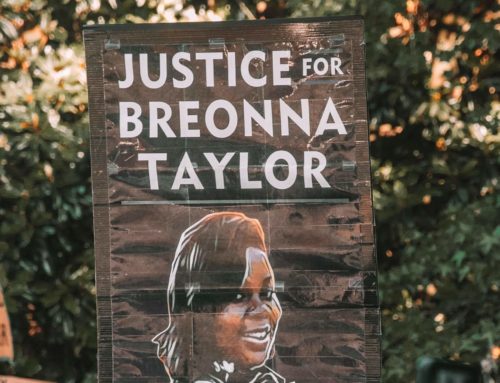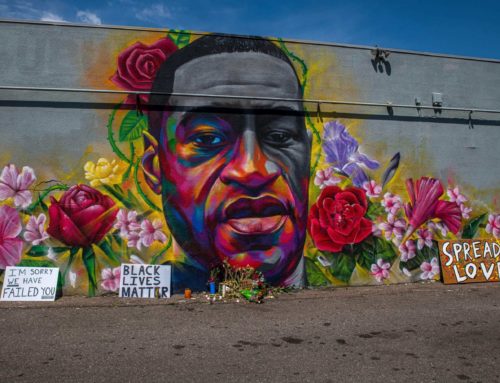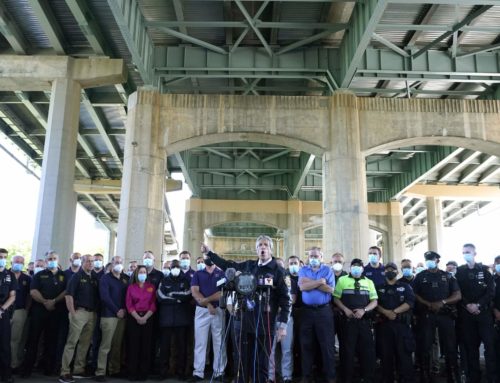Austin Thompson, director Youth Engagement Fund
Understanding Baltimore’s Uprising
Freddie Gray….It is a now too familiar story. Multitudes take to the streets in pursuit of justice for an unarmed black male killed by the police in a city plagued with deep structural racism and economic inequalities. Baltimore’s recent uprising following the death of Freddie was one in a series of recent events that have called into question the relationships between law enforcement and black communities. On Sunday, May 3rd 2015 we visited and interviewed several participants in the movement moment now known as the Baltimore Uprising to find out more. In the end, we discovered a city that in the midst of a battle that starts with winning justice for Freddie Gray and changing racist police practices but does not end there. We did a site visit with the National Economic and Social Rights Initiative (NESRI). We also attended a church service at Pleasant Hope Baptist Church, which has become an epicenter for movement-building in the current moment. Many view the struggle for justice for Freddie Gray as part of a larger effort to rebuild a community deeply divided by race and class and imagine alternatives to status-quo that offer the promise of a safer, more prosperous future. We spent most of the day in The Real News Network’s offices with members of a coalition called Baltimore United for Change. Bmore United, as they are also known, includes a youth group called Baltimore Algebra Project, Baltimore BLOC, Casa de Maryland, City Bloc, Reverend Dr. Herber Brown III, Leaders of a Beautiful Struggle, Kinetics, and the Tyrone West Coalition.
A Movement Moment Full of Hope and Frustration
Following the announcement of charges against 6 officers involved with Freddie Gray’s arrest there was a sense of jubilation in Baltimore. We learned from Pastor Herber Brown that in the same streets teaming with militant expressions of rage just days before, dancing and shouts of joy followed the announcement by State Attorney Mosby. But this post-announcement jubilation is quickly giving way to a sober recognition that charges for the officers do not automatically signal justice. Looking ahead, organizers expressed several frustrations around how to proceed in this more complicated phase. For example, they talked about a lack of internal communication and a lack of commitment from groups in the city to share information openly about each others’ plans and resources. An open flow of information between groups and individual activists is important for both building trust and a longer-term shared strategy.
In addition, good stories of communities inside Baltimore coming together were not being documented or shared widely to the outside world. Organizers feared that as the struggle for justice for Freddie Gray drags on the narrative about what happened to in recent days is already being lost. For example, they told incredibly inspiring stories of communities, normally segregated by race, joining forces to fight for justice for Freddie Gray. Instead, the mainstream media spread stories of store burnings and looting that organizers insisted were marginal to the mass actions taking place in the city.
In the heat of the Baltimore uprising volunteers jumped into action raising legal and bail support, working communications, leading trainings, planning actions, distributing food and more. To say nothing of the outstanding level of commitment of volunteers in Baltimore, the mobilization of volunteers took place without an infrastructure in place to sustain them. For example, there were few provisions for childcare for volunteers with children. The lack of resources for food, safe spaces for volunteers to sleep in when working after normal business hours, and money to account for at least some of the volunteer time being put in were all sources of major frustration.
Within Baltimore United for Change specifically there was awareness expressed by about the need for more cohesiveness in goals and objectives among coalition members. Because the coalition came into existence in a movement moment there was no pre-existing strategic plan or medium-term vision. Although the coalition masterfully coordinated rapid response efforts in Baltimore, there appears to be a lack of consensus about where the set of groups might go next. This dynamic affects the prospects of fundraising as the individual groups in the coalition are greater than the whole right now. A related issue is that, even were a coalition of pre-existing organization to be formed, many of the participants in the Baltimore uprising were unorganized individuals taking action for the first time. What then is the proper balance in influence/power between organizations and individuals in movement moments?
Finally, there was a sense that national organizations, funders, etc., were in some ways dictating or seeking to dictate and set the agenda for Baltimore without the input of local organizers.
A Few Positive Deviations from the Norm to Build on
Gilmore Projects in Baltimore was an epicenter of protest activity that was largely self-organized outside of the traditional community organizations in the city. What made recent events in Baltimore an uprising in the first place was largely this self-organized expression of rage outside of the parameters of the non-profit or political establishment. As expressed above, the dynamism of this self-organized activity has become a source of tension with existing organizations and organizers.
In a racially divided city, there were instances of white residents of Baltimore breaking curfew in solidarity with black organizers to document the unequal response of police forces in the city. This story of rare inter-racial solidarity also took place with the Latino community as well. Casa de Maryland, a low-income, immigrant organization with roots in Baltimore was a coalition partner of Baltimore United for Change.
Many Analogies from other Struggles
In Baltimore like Ferguson before it, the act of rioting was a rare and unexpected expression of rage that garnered national attention and volunteer support from across the country. Ironically, the explosion of anger that galvanized the country in support of the fight for justice in Baltimore also deepened the militarization of the police forces and occupation by the National Guard.
The announcement of charges against the 6 officers involved with the arrest and ultimate death of Freddie Gray was similar to the announcement of deferred action for undocumented childhood arrivals and their parents in late 2014 by President Obama. In the case of the immigrant justice struggle, the distance between the announcement and the still unimplemented new law has made it more difficult to the bases of activists motivated. The lesson for Baltimore organizing moving forward is that organizations on the ground should anticipate similar challenges keeping their activist based engaged moving forward.
There were also key parallels between riots in Baltimore and the expression of rage in other cases such as the 2010 case of Oscar Grant in Oakland and the aftermath of the Rodney King beating in Los Angeles in the 1990’s. The organizers expressed interest in learning from activists who have experienced other similar movement moments to share best practices and to learn shortcomings.
Funding Opportunities
The activists we interviewed identified several key opportunities for funders to support. These opportunities range from short and medium term investments that are key to building and sustaining the movement in Baltimore.
- Additional communications capacity to continue telling the true story of what’s taking place on the ground
- Grassroots fundraising and recruitment capacity through online and field canvassing
- A planning grant for the Baltimore United for Change coalition to work through a longer-term strategic plan and vision for their work
- Organizing capacity to win a key policy reform by dismantling the Maryland Law Enforcement Officer’s Bill of Rights (that creates barriers to seeking accountability during instances of police misconduct)
- Political education trainings and curriculum for new activists who emerged in the current movement moment, such as BOLD
- A convening of people from previous movement moments that emerged via police violence from different eras to promote shared growth and learning
- Construction of alternative institutions (policing institutions and economic institutions)
- Stipends for young volunteers to sustain their involvement in the next phase of the struggle
How to Give
Baltimore United for Change has a fiscal sponsor called the Praxis Project. Praxis tries not to have wire information passed through too many hands. For folks who want to wire money to Baltimore United for Change contact Makani Themba, Executive Director of Praxis. Makani will happily provide any information and answer any questions.
Oakland Office 510-652-5250
Cell 410-601-9152
The Baltimore United for Change coalition also has a general support fund that is accessible online at http://www.crowdrise.com/BmoreUnitedSupportFund/fundraiser/tremurphy. The contact person for the general support fund and other related information is Tre Murphy of the Baltimore Algebra Project and the Baltimore United for Change coalition. Tre can be reached at:
tmurphy@baltimorealgebraproject.org
Cell 410-637-9795



